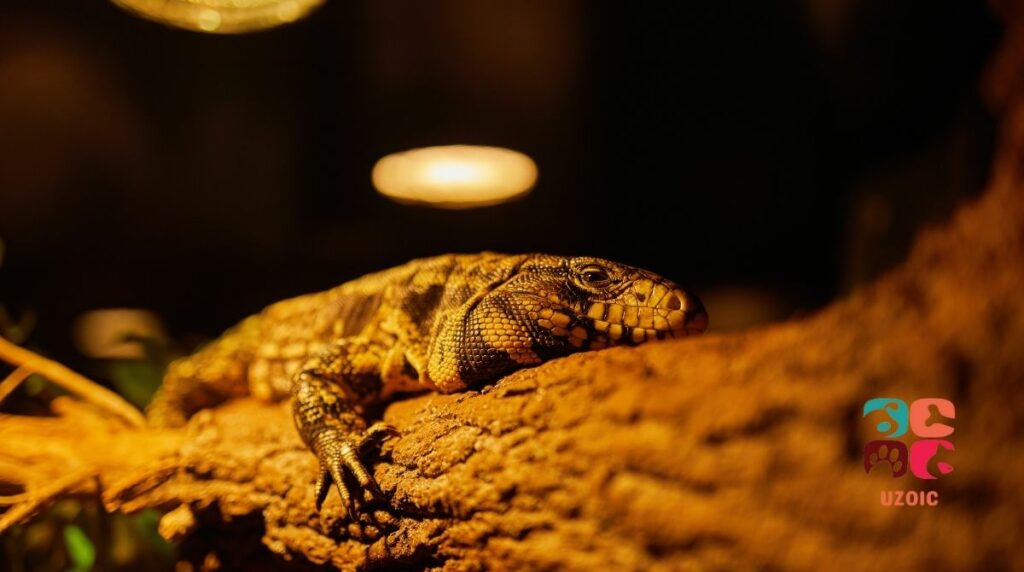There is a lot of debate surrounding the use of silicone for reptiles. Some people swear by it, while others believe that it can be harmful to their pet. In this blog post, we’ll take a look at the evidence and explore whether or not you should use silicone in reptile habitats.
Reptiles have grown in popularity as pets in recent years. They are low maintenance and can be a fun addition to any home. However, there is still a lot of misinformation about their care. One of the most common questions that reptile owners have is whether or not silicone is safe to use in their habitat.
Before we understand the safety of using silicone in reptile habitats, let us first understand the types of silicone that are commonly used in pet habitat. Broadly in simple terms, we can say there are two main types of silicone: solid and liquid.
Table of Contents
Is Silicone Safe For Reptiles?

The answer is yes; silicone is safe for reptiles when used correctly. You can use 100% silicone sealant, caulk, or putty to build and fix anything in your reptile’s enclosure. Just make sure that you choose a product that is made from high-performance 100% silicone. This type of silicone is non-toxic for animals. From users experience, once 100% silicone is fully cured, it is considered safe for reptiles. However, uncured silicone can irritate and make your pet sick as it releases small amounts of acetic acid and other chemicals during the curing process.
Are Silicone Fumes Toxic To Reptiles?
Silicone fumes can contain a variety of chemicals, including acetic acid. These chemicals can penetrate a reptile’s respiratory system and damage its lungs. In addition, they can also be absorbed through the skin, resulting in systemic toxicity.
When heated, silicone releases a gas that is toxic to reptiles. In fact, this gas is so harmful that it can kill a reptile within hours of exposure. The symptoms of toxicity include difficulty breathing, convulsions, and paralysis. If your reptile is exposed to silicone fumes, it is important to get it to a veterinarian immediately. There is no cure for silicone toxicity, but the vet may be able to provide supportive care that could help your reptile survive.
As a result, it is important to take precautions when using silicone-based products around reptiles. If possible, choose products that are labelled as being safe for use around animals, and always provide ventilation when using silicone-based products in your reptile’s habitat.
When used correctly, silicone is a safe and non-toxic material that can be used in reptile habitats.
Is Silicone Sealant Non-toxic For Animals?
While silicone sealant is considered non-toxic, it can present a choking hazard to animals if swallowed. Contact your veterinarian immediately if you suspect your animal has ingested silicone sealant. Symptoms of silicone sealant ingestion in animals include drooling, pawing at the mouth, vomiting, and difficulty swallowing. In severe cases, an animal may experience intestinal blockage, which can be life-threatening. If your animal does ingest silicone sealant, your veterinarian will likely induce vomiting and provide supportive care until the sealant passes through the digestive system. In most cases, animals recover well from silicone sealant ingestion with no long-term effects. However, it is always best to err on the side of caution and contact your veterinarian as soon as possible
Further, while many people believe that silicone sealant is non-toxic, the reality is that it can release harmful chemicals into the air when heated. When exposed to heat or sunlight, silicone sealants can release volatile organic compounds (VOCs) into the air. These VOCs can cause respiratory problems, headaches, and dizziness. So check the product label to see if it is VOC compliant or not.
You can minimize exposure to VOCs by using an exhaust fan when applying silicone sealant and ventilating the area well afterward.
Is Silicone Sealant Non-toxic For Reptiles?
There are many brands of silicone sealant on the market today, and each one claims to be non-toxic. However, not all of these products are safe for use around reptiles. Many contain chemicals that can be harmful to these animals if they are ingested. In addition, some brands of silicone sealant emit fumes that can be harmful to reptiles if they are inhaled.
What Type Of Silicone Is Safe For Reptiles?
Many types of silicone are available on the market, but not all of them are safe for reptiles. The type of silicone that is most often used in reptile enclosures is known as vivarium safe silicone. Be sure to select a product that is made from 100% silicone. This silicone is safe for reptiles and does not emit harmful fumes once cured.
Some other types of silicone, such as those containing lead or UV inhibitors, can be toxic to reptiles. As a result, it is important only to use vivarium-safe silicone for your pet and not the regular silicone type available in the market.
How To Use Silicone To Seal Reptile Enclosure
Many people are looking for a safer option to seal their reptile enclosures.
Time needed: 3 days
How To Use Silicone To Seal Reptile Enclosure
- Products that you can use to seal the reptile enclosure
Any 100% Silicone Cartridge – Make sure it says Neutral cure. You can find it any hardware store.
Vivarium-safe silicone is a great option because it is non-toxic for animals. This type of silicone can be found at most hardware stores and is very easy to use. - Clean The Enclosure
First, you will need to clean the area where you will be applying the silicone. Take some warm water, vinegar and a paper towel (or micro fiber). Do not use cloth towel as it will leave lint. Clean out the enclosure properly. This will help the silicone adhere to the surface. Do not soak the enclosure with water as it will cause water and moisture to get into the cracks and there will be no point in sealing it. Make sure that there is no grease or dirt on the surface, as this can cause the silicone to not adhere properly.
- Silicone Application
Next, apply a small amount of silicone to one corner of the glass or enclosure. Use your finger to spread it out in a thin layer. Continue doing this until you have sealed the entire perimeter of the enclosure. Then, allow the silicone to cure for 72 hours before adding your reptile to the enclosure.
- Curing And Precautions
Once it is dry, the silicone will be safe for reptiles – no smell, odor, or off gas after curing. It will take 72 hours to cure. During this time, it will release odor (small amount of acetic acid) so ensure no reptiles are around during this time. Once it is dry, your reptile can safely be in contact with it. After it has fully cured, it will not release any smell, odor, and vapors. Just make sure that the area is well-ventilated so that the silicone can cure properly.
By following these steps, you can be sure that your reptile will be safely sealed inside its enclosure.
Conclusion
So there you have it; silicone is a safe option for your reptile enclosure when used correctly. Be sure to use 100% silicone with a neutral cure or vivarium-safe silicone and allow it to cure fully before placing your reptile inside. And as always, if you have any questions or concerns, be sure to speak with your veterinarian. Thanks for reading!
Also Read
- Why Your New Tortoise Is Not Eating: Tips to Get Your Tortoise to Eat
- Why Your Bearded Dragon Is Blowing Bubbles: Causes and Solutions
- Can Bearded Dragons Eat Clover?
- Do Leopard Geckos Need UVB?

